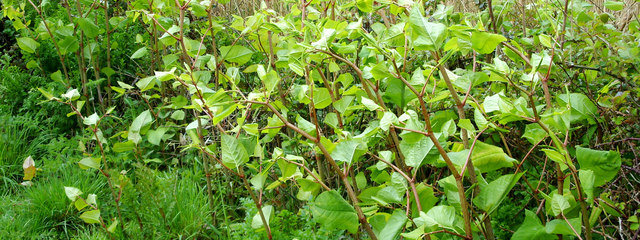Japanese Knotweed – updated guidance to Surveyors may help house owners selling and mortgaging
The Royal Institution of Chartered Surveyors (RICS) have published updated guidance around Japanese Knotweed which came into effect on 23 March 2022.
The guidance reflects a better understanding of Japanese Knotweed; research suggests the physical damage to property from it is no greater than that of other disruptive plants and trees that are not subject to the same controls.
The aim is to assist surveyors who find Japanese Knotweed in making their assessment and providing advice in a consistent way. This may affect how buyers and their lenders treat affected properties.
Background
This is a result of the consultation around draft guidance that closed on 3 August 2021. The updated guidance replaces RICS’ 2012 information paper “Japanese Knotweed in Residential Property”.
The Invasive Alien Species (Enforcement and Permitting) Order 2019 (SI 2019/1213) created requirements around management measures and penalties.
The guidance is a response to the House of Commons Science and Technology Committee report “Japanese Knotweed and the Built Environment” and the Department of Environment, Food and Rural Affairs’ investigation into Japanese Knotweed, that questioned the current approach to the assessment of risk and impact on value of Japanese Knotweed.
As it acknowledged “Japanese Knotweed caused increasing problems in the residential market due to concerns that the plant may cause damage to properties. These originated from an understanding that Japanese Knotweed is a long lived and hard to kill plant, which left unmanaged can rapidly colonise and dominate. not just green areas, but can affect hard landscaped areas and disrupt lightweight structures and garden walls. Regrettably the impact in the market was also increasingly influenced by exaggerated media reporting, resulting in an adverse public reception out of all proportion to the actual problem. This guidance note is intended to provide clarity and help to rebalance perceptions”.
RICS’ previous 2012 guidance created risk categories based on a distance of 7m from buildings and boundaries. 2018 research showed that Japanese Knotweed posed less of a risk of damage to substantial buildings than many trees or woody shrubs, and led to agreement that 3m was a more appropriate distance for spread of the root.
Other research showed that whilst it was difficult to eradicate well established stands of Japanese Knotweed quickly, it confirmed that an infestation was controllable if undertaken for sufficient time (3-5 years for stands smaller than 100m2).
The House of Commons Science and Technology Committee report in 2019 noted that lenders followed the RICS guidance and described the 7m rule as a blunt instrument that did not reflect later scientific evidence, and so called for a revised assessment process that was more nuanced.
DEFRA commissioned a report that found “no other country takes a similar approach to Japanese Knotweed in the context of property sales as the UK” and that “the UK approach is not disproportionate given the level of invasion of Knotweed and the control measures that may be required”. It noted that the stigma surrounding Japanese Knotweed was creating nervousness amongst buyers, sellers and lenders causing an unduly risk averse approach. It called for a reassessment of the risk category and consistent professional advice to reframe Japanese Knotweed as a mitigatable environmental issue rather than solely as a property or social issue and to create recognition for eradication of Japanese Knotweed is not a helpful objective, but instead the focus should be on management and control.
RICS have produced a helpful decision tree for surveyors and paragraph 4.5, page 22 available here: https://www.rics.org/globalassets/rics-website/media/upholding-professional-standards/sector-standards/real-estate/japanese-knotweed-and-residential-property-1st-edition-feb-2022.pdf
This tree is to be used to categorise the infestation to then report the relevant management category to the lender for example. The notes beneath each of the management category assessments are designed to provide “recommendations that most lenders will hopefully be willing to adopt in the further ends of greater consistency and learning policies across the market”.
Conclusion
It remains to be seen whether the approach of lenders will change as a result of the updated guidance. Buyers will certainly benefit from a consistency of approach. By extension, sellers of properties affected by Japanese Knotweed should also benefit over time.
